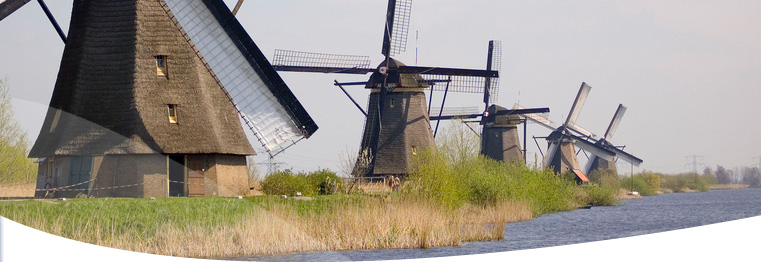|
Introduction
The Netherlands is a geographically low-lying and densely populated country. It is popularly known for its traditional windmills, tulips, cheese, clogs (wooden shoes), delftware and gouda pottery, for its bicycles, its dikes and surge barriers, and, on the other hand, traditional values and civil virtues such as its classic social tolerance. An old parliamentary democracy, the country is more recently known for its rather liberal policies toward recreational drugs, prostitution, homosexuality, and euthanasia.
|




